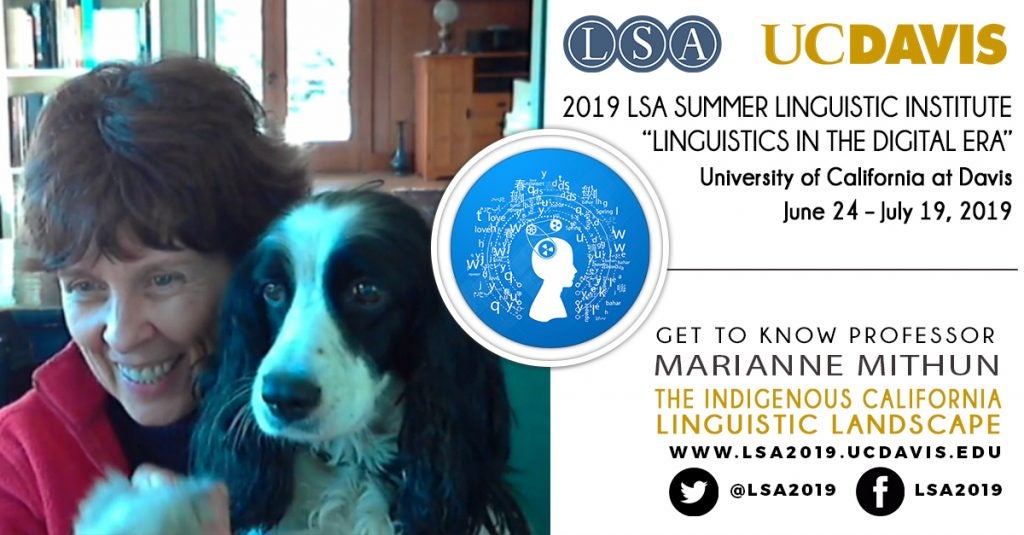
LSA Vice-President/President-Elect Marianne Mithun (UC Santa Barbara) will be spending the summer teaching the Indigenous California Linguistic Landscape course at #lingstitute2019. In this interview, we asked Marianne about how she got interested in linguistics, her time at Yale, and her current documentation and revitalization projects with the Mohawk, Tuscarora, Central Pomo, and Chumash communities.
1. Can you please tell us about your linguistic background?
I discovered linguistics by catching sight of a book on a library shelf, reading that, then going back time and again to read the other books near it. I was hooked. I entered the graduate program at Yale knowing almost nothing, but never stopped being thrilled by the chance to discover new things about this world. Attending a Linguistic Institute after my first year of graduate school was especially eye-opening, offering a dazzling array of new ideas, new tools, and interesting people. Some of the most formative experiences for me as a graduate student came out of working with the Tuscarora (Iroquoian) community, work which showed me just how different languages can be.
2. When did you first join the LSA?
I joined the LSA during my first year of graduate school, in preparation for attending the Linguistic Institute at Ohio State. Definitely a good move.
3. Can you tell us about the course you are teaching at the Institute?
I’ll be teaching a course called The Indigenous California Linguistic Landscape. California is home to an extraordinarily rich array of indigenous languages, with around 20 different genealogical groups some quite large, some just isolates. These languages differ intriguingly in so many ways from the better known languages of Europe and Asia, but at the same time, there are striking parallels, across genealogical boundaries, in how they categorize experience lexically and grammatically. We’ll look at how cultural traditions and social circumstances might have brought about the deep parallelisms.
4. What research are you currently working on?
I am involved in ongoing documentation and revitalization projects with Mohawk, Tuscarora, Central Pomo, and Chumash communities. Often the best ideas come out of just observing the rich, intricate patterns these languages show, and what their speakers do with them. I am always interested in how grammar develops through time, and the myriad ways language contact shapes it.
5. What is your favorite hobby or pastime?
Hiking and swimming.
6. In a parallel universe in which you are not an academic/linguist, what would you be?
How could anything be better than linguistics??
7. What are you most looking forward to about Davis?
Linguistic Institutes are a fantastic way to hear what people are thinking about, trying on new ideas, discovering new questions, seeing new ways to look at these questions, and, of course, spending time with old friends and new.
8. Ice cream or Cake? Cats or Dogs? Quarter system or Semester system?
Ice cream; dogs, dogs, and dogs; and it depends on the clientele.
9. What advice would you give to graduate students interested in pursuing a career in linguistics?
If you love linguistics, it is the best way in the world to spend your life. If not, sticking with it would be a terrible idea: there are plenty of other things out there. I tend to think that when linguists have had a chance to immerse themselves in at least one language, taking in all of what speakers do when left to their own devices, saying what they want and how they want, interacting with others, those linguists can often bring special insight to their work. The more we know about each area of linguistics, the more we’ll have to bring to understanding each piece and the connections among them.
